|
TOUR ONE – THE
VATICAN
Route:
- the Vatican Museums
- the Sistine Chapel
- Saint Peter’s Basilica
- Saint Peter’s Square
Time of sightseeing: about 4 hours
The tour starts with the visit to the Vatican Museums with the collection of ancient sculptures and the famous Laocoön to start
with, a collection of paintings displaying works of Giotto, Leonardo da Vinci, Caravaggio and
Raphael, a collection of arrases and the Raphael’s Rooms with frescoes of the artist of Urbino, as well as the Sistine
Chapel, priding itself on the greatest painters of the Renaissance:
Perugino, Botticelli and Michelangelo, the author of the famous frescoes on the ceiling and the altar
wall. The next stage of sightseeing is Saint Peter’s Basilica with the Pietà by Michelangelo and tombs of popes
(among them, the tomb of John Paul II) and Saint Peter’s Square.
|
|
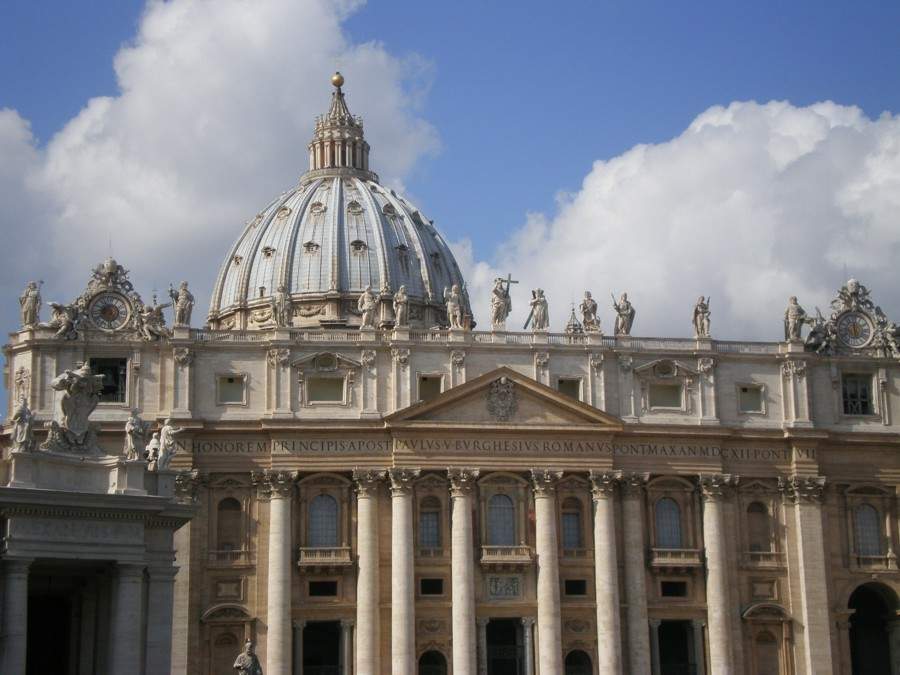

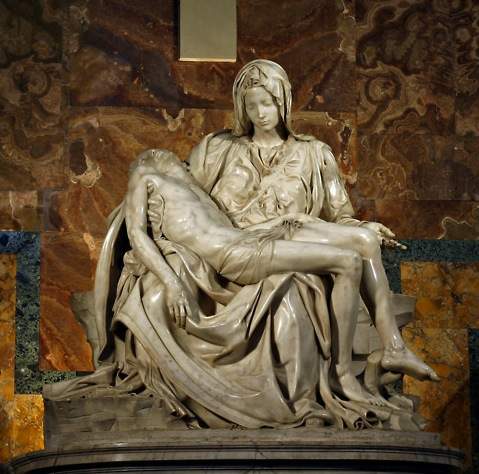
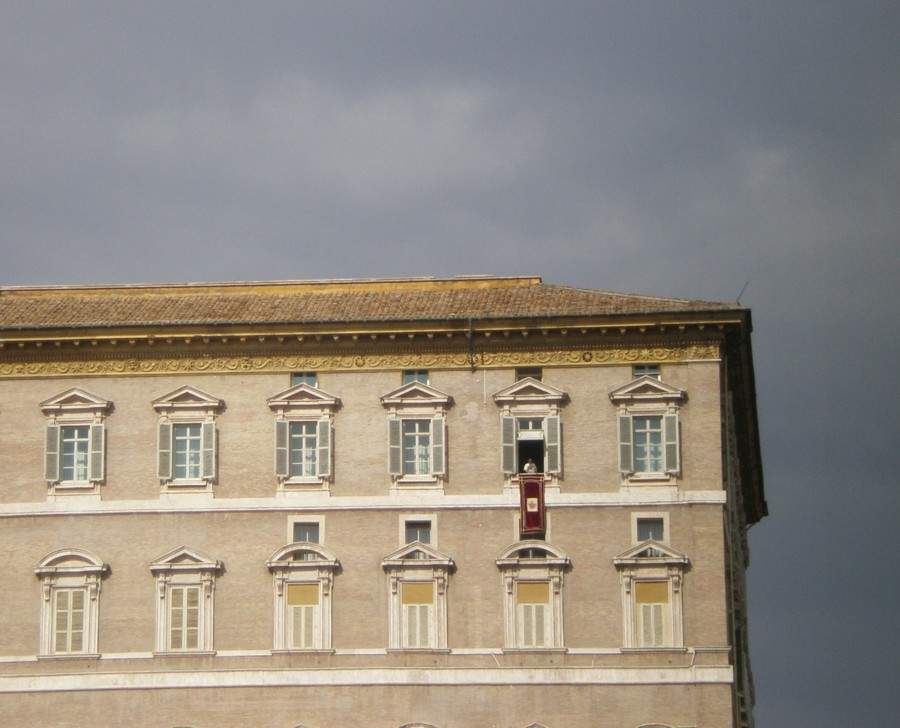
|
|
|
TOUR TWO – ANCIENT ROME
Route:
- the Basilica of Saint Clement
- the Palatine Hill
- the Roman Forum
- the Capitoline Hill
- the Trajan’s Forum
Time of sightseeing: 4/5 hours
The tour includes sightseeing a three-tiered Basilica of St. Clement with excavations from the Roman
times; a visit to the Palatine Hill and the Coliseum, a walk across the Roman Forum – the
political, religious and commercial center of the ancient city; a stay at the Capitoline Hill with its beautiful Renaissance palaces designed by Michelangelo. The tour ends at Piazza Venezia and the Trajan’s Forum with its famous
column.
|
|


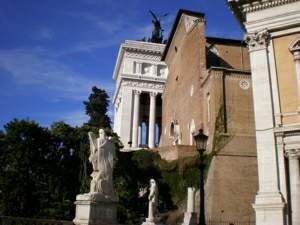

|
|
|
TOUR
THREE – MAJOR BASILICAS
Route:
- Saint John Lateran
- Saint Mary Major
- Saint Paul Outside the Walls
Time of sightseeing: about 3 hours
The walking tour includes a visit to the Cathedral of the Bishop of
Rome, which is the Basilica of St. John Lateran, and to the Holy
Stairs; to the famous St. Mary Major Basilica with its beautiful mosaics from the 5th
century, as well as to St. Paul’s Basilica, erected on the burial site of the Apostle outside ancient
Rome.
|
|
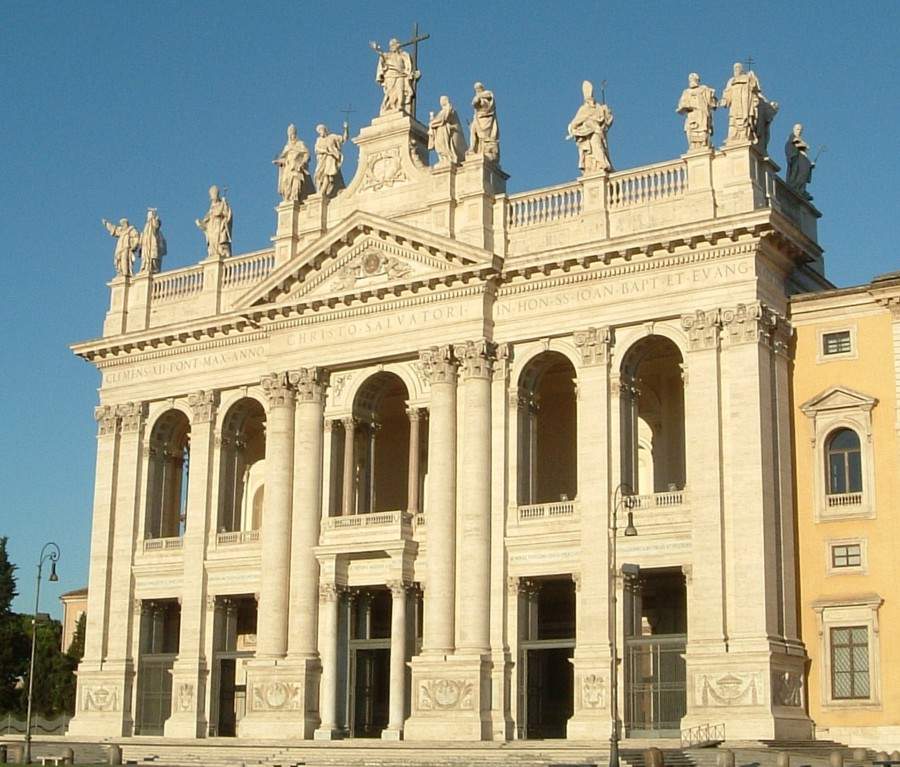

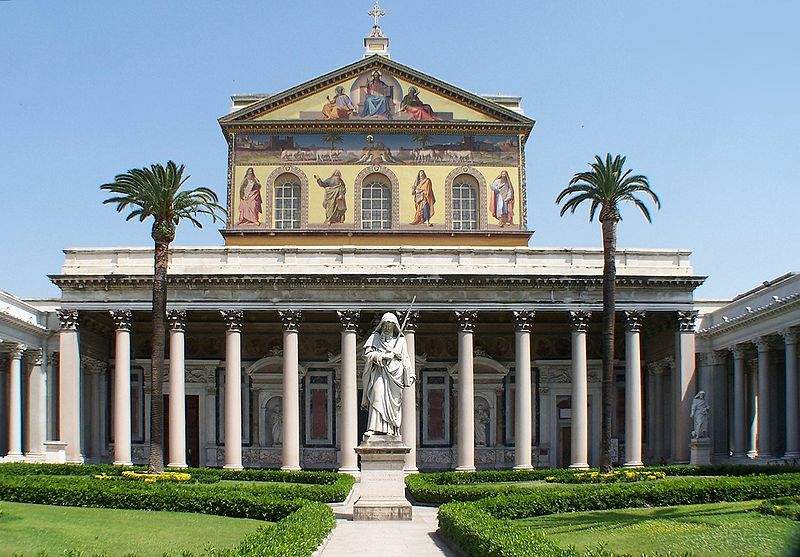

|
|
|
TOUR
FOUR –
SQUARES AND FOUNTAINS
Route:
- Piazza Navona
- the Church of Saint Louis of the French
- Pantheon
- the Church of Saint Mary above Minerva
- the Church of the Gesù
- the Church of Saint Ignatius of Loyola
- the Trevi Fountain
- Piazza di Spagna
- Piazza del Popolo
Time of sightseeing: about 4 hours
The tour starts with Piazza Navona built on the site of the circus of Ceasar
Domitian. It includes sightseeing the Church of St. Louis of the French with a magnificent triptych of St. Mathew by Caravaggio, then a visit to
Pantheon, the best-preserved temple of ancient Rome, and sightseeing the Church of Saint Mary above Minerva with the grave of St. Catherine of Siena. The next part of the walk is a visit to the Church of the Gesù, which is the prototype of all Baroque churches of the
world, with the grave of St. Ignatius, and then to the church of St. Ignatius with the painted
“dome”. The tour then leads to the most beautiful Roman Trevi
fountain, to Piazza di Spagna with its famous Baroque stairs from the 18th
century, and it ends with a stroll on one of the most elegant squares of the city – Piazza del
Popolo.
|
|
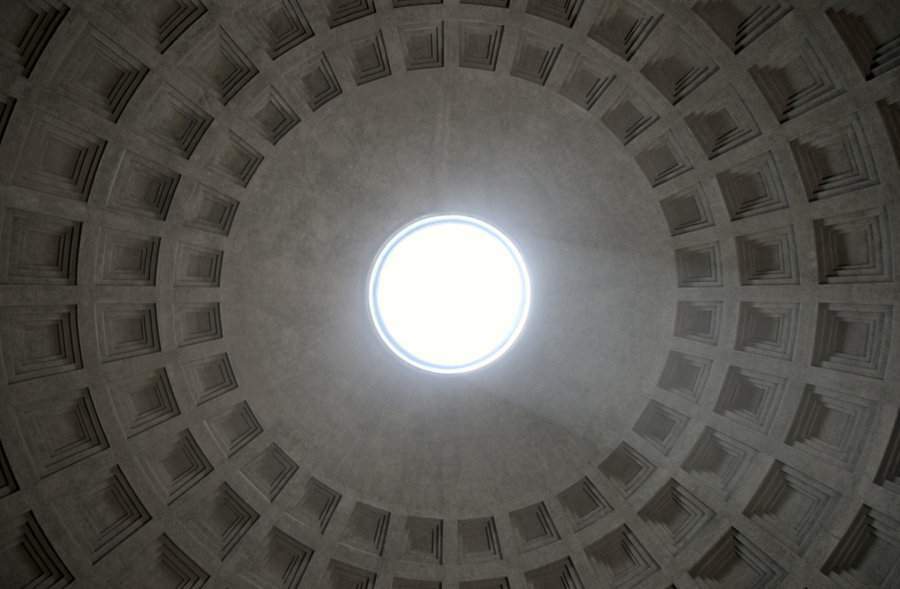
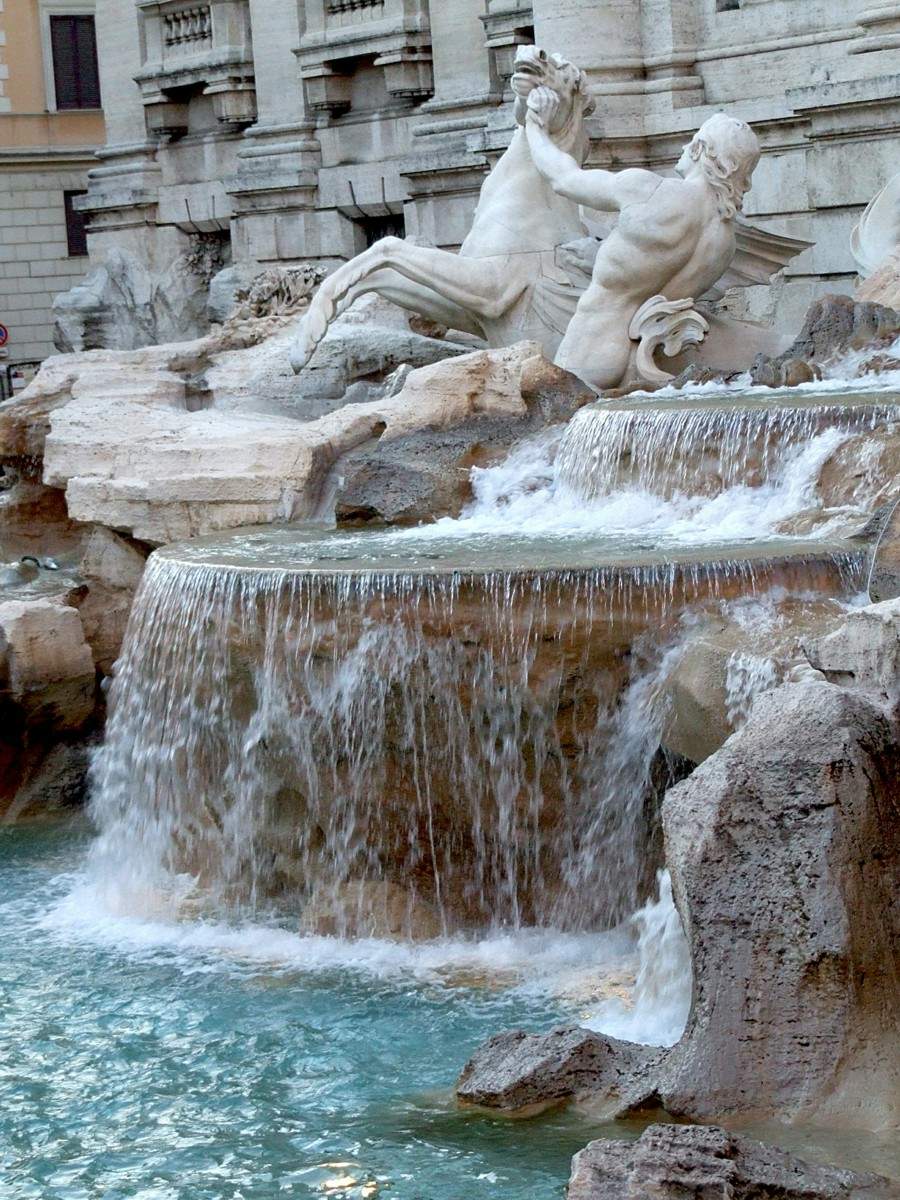
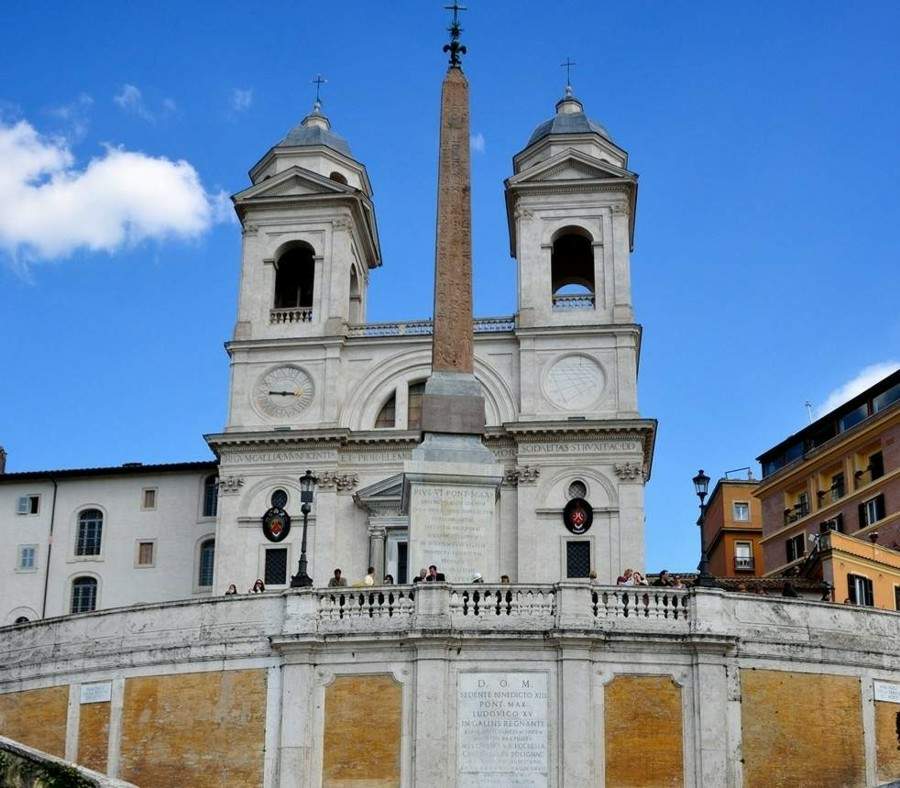

|
|
|
TOUR
FIVE – THE CAPITOLINE MUSEUMS
Route:
- The Capitoline Museums
Time of sightseeing: about 3 hours
A visit to the oldest museum of the world on top of the Capitoline Hill. Among other
exhibits, there are statues of Marcus Aurelius and Constantine and the famous Capitoline Wolf. In the impressive collection of classical
sculptures, there are displayed, among others, the Dying Gaul, the Capitoline
Venus, the Cupid and Psyche and the Faun. The Pinacotheca presents the masterpieces of Caravaggio, Titian and Rubens. In the museum collection there are precious Etruscan and Greek ceramics as well as interesting
frescoes.
|
|
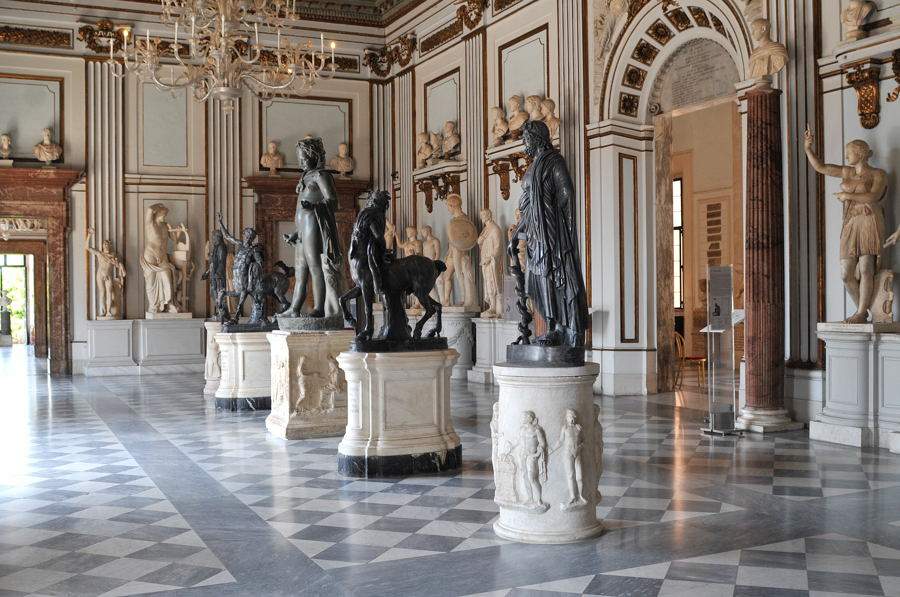
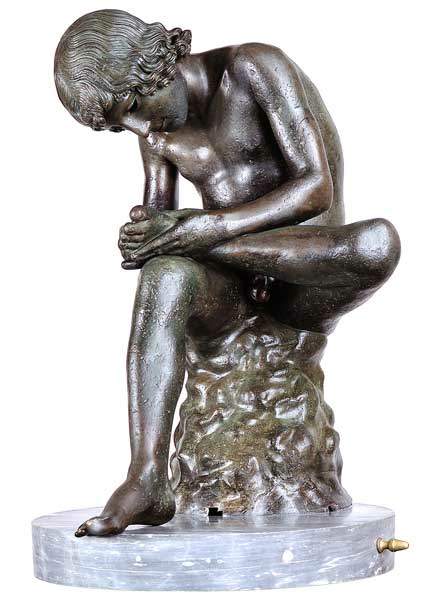
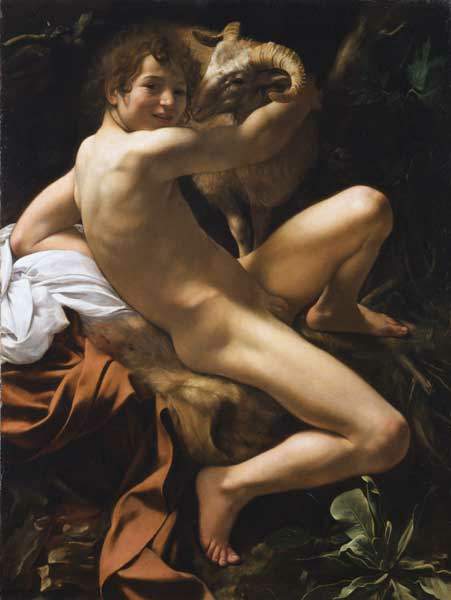

|
|
|
TOUR SIX – THE BORGHESE GALLERY
Route:
- The Borghese Villa and Gallery
Time of sightseeing: about 3 hours
A stroll around the Villa Borghese Gardens and a visit to a famous art gallery begun by Cardinal Scipione
Borghese, who was one of the first patrons of Bernini and an admirer of Caravaggio’s art. Beside the masterpieces of the above mentioned
artists, in the gallery there are works of Raphael, Titian, Canova, Rubens and Correggio.
|
|

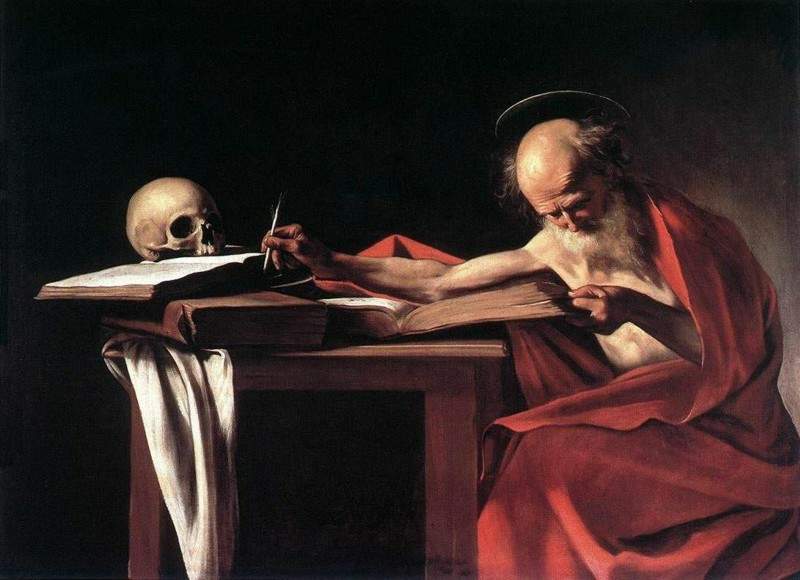
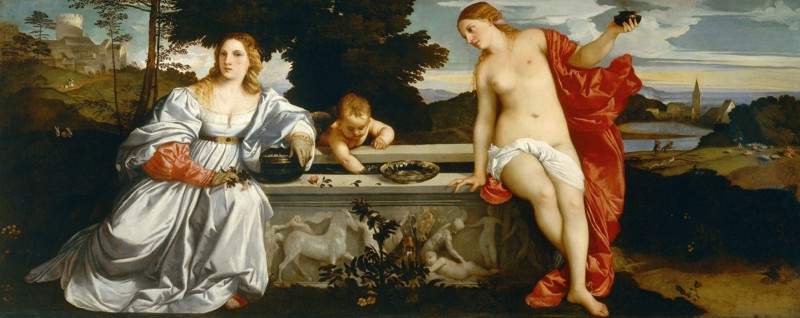

|
|
|
TOUR SEVEN – THE CATACOMBS AND VIA APPIA ANTICA
Route:
- Catacombs
- the Appian Way
Time of sightseeing: about 3 hours
Sightseeing Catacombs, underground burial places of first
Christians, and a walk down Via Appia, the oldest Roman road - regina
viarum, or the queen of roads, the building of which reaches back to 312
B.C.
|
|


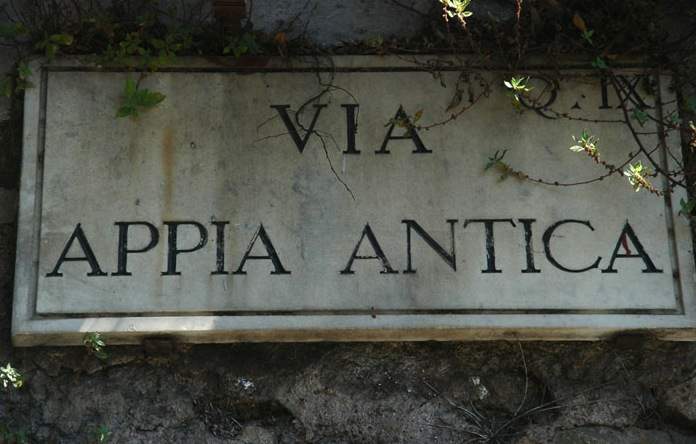
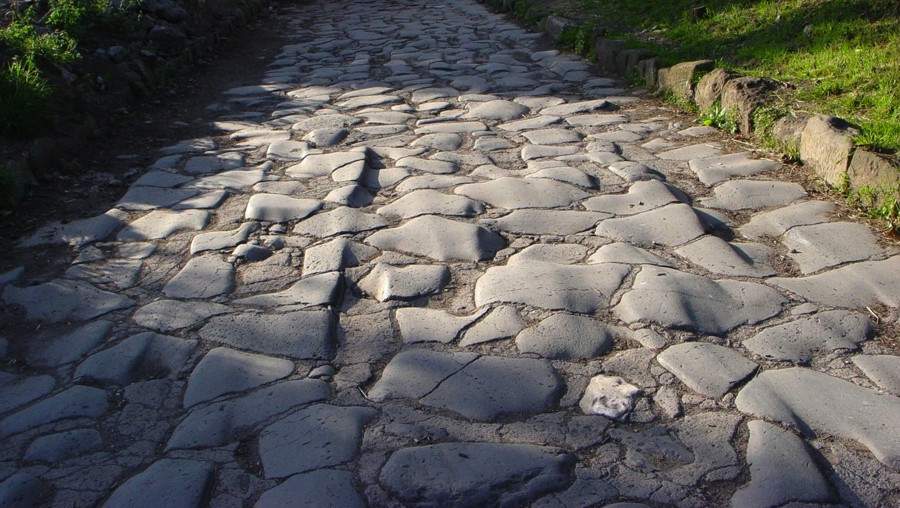
|
|
|
TOUR EIGHT – OSTIA
Route:
- Ostia Antica
Time of sightseeing: about 3 hours
The tour includes a visit to an ancient seaport of Ostia. The first Roman colony started by the legendary fourth of the King of
Rome, Ancus Marcius, used to be a window on the world for ancient
Rome. The ancient ruins preserved to this day are one of the biggest in area in
Italy.
|
|




|
|
|
TOUR NINE –
HADRIAN’S VILLA AND VILLA D'ESTE IN TIVOLI
Route:
- the Hadrian’s Villa
- Villa d'Este
Time of sightseeing: about 6/7 hours
A visit to the largest complex of palace buildings of ancient times - Emperor Hadrian’s
residence, the construction of which took over ten years to
complete; and a visit to the family d’Este Renaissance villa, surrounded by magnificent terrace gardens with caves and numerous pools and
fountains.
|
|
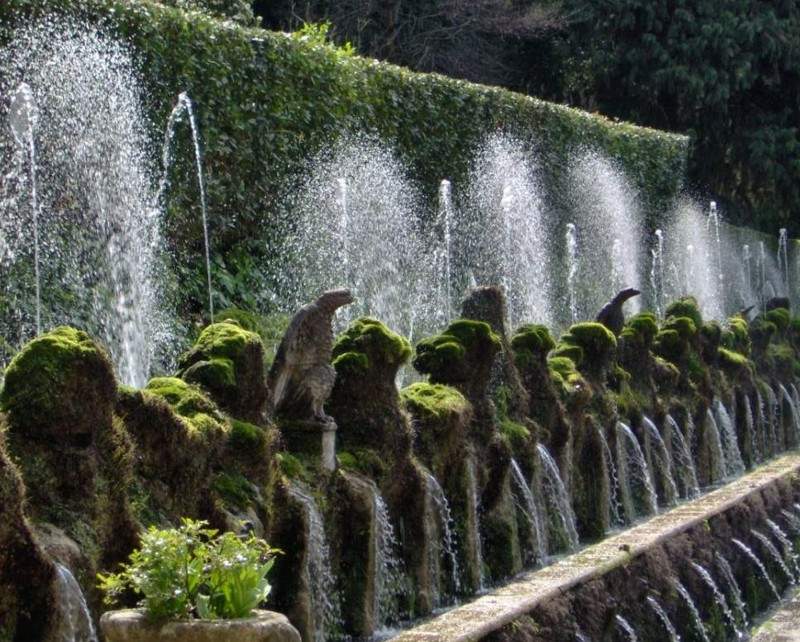
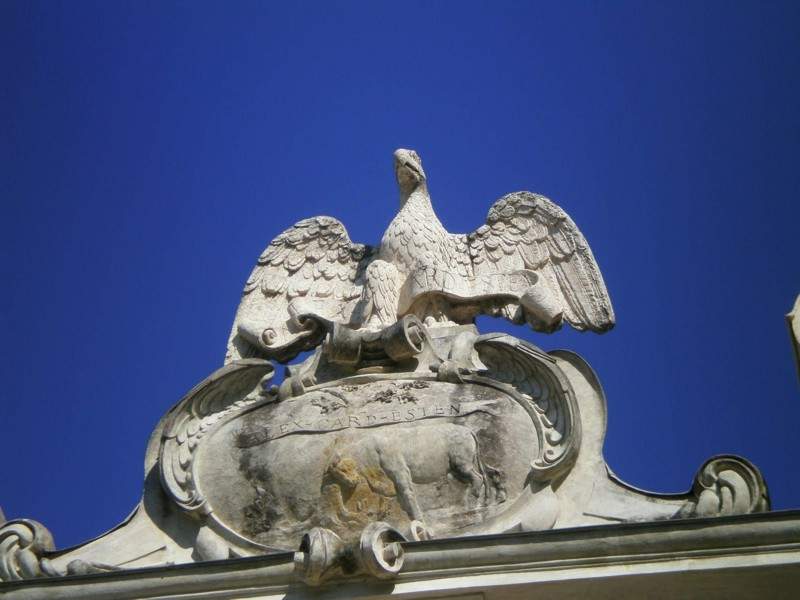


|
|
|
TOUR TEN – FROM THE AVENTINE HILL TO TRASTEVERE
Route:
- the Aventine Hill
- Circus Maximus
- the Mouth of Truth
- Forum Boarium
- the Jewish district
- the Tiber Island
- Trastevere
Time of sightseeing: about 4 hours
A hike to the Aventine Hill, where you can peep through the most famous keyhole in the world to see the distant Michelangelo’s dome over St. Peter’s basilica and where you can see places connected to the Legend of Saint
Alexius. The route includes Circus Maximus, an ancient stadium where legendary chariot races took place, Forum Boarium with the famous Mouth of
Truth, the Jewish district, the Tiber Island and Trastevere - the most picturesque district of
Rome, situated at the foot of the Janiculum.
|
|




|
|
|
TOUR ELEVEN – FOLLOWING THE TRACKS OF CARAVAGGIO
Route:
- chosen churches
- chosen art galleries
Time of sightseeing: about 6/7 hours
A walk following the tracks of one of the greatest painters of Europe, recognized as the first great Baroque
artist, working at the turn of the 16th and 17th centuries – Michelangelo Merisi da Caravaggio.
|
|

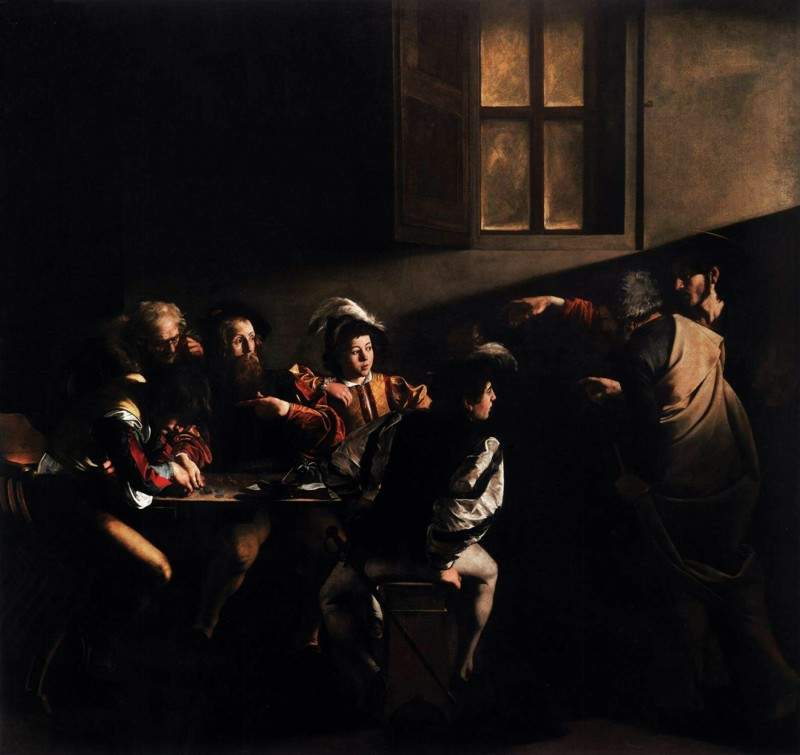

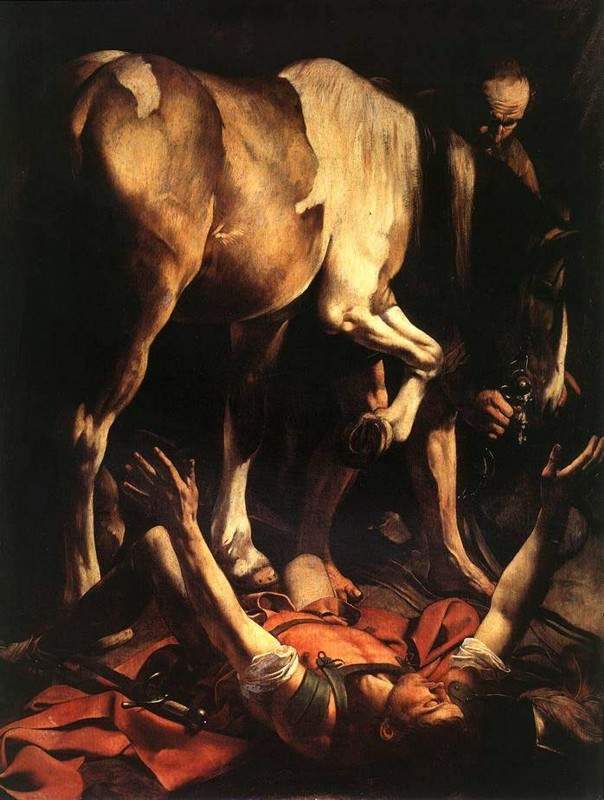
|
|
|
TOUR TWELVE – FROM CASTEL SANT’ANGELO TO CAMPO DE’ FIORI
Route:
- Castel Sant’Angelo
- Via Giulia
- the Church of Holy Mary in Monserrat
- Campo de’ Fiori
- Palazzo and Galleria Spada
Time of sightseeing: about 4 hours
A visit to Castel Sant’Angelo – the mausoleum of Hadrian and his
followers, a medieval prison, a fortress and a papal residency. The next stage of the tour is a walk down the 16th century street Via Giulia, a visit to the church of Holy Mary in Monserrat and to the famous Campo de’
Fiori, a market square and a place where street art has been developing since time
immemorial. The last stage of the walk is a visit to the Palazzo and Galleria Spada.
|
|

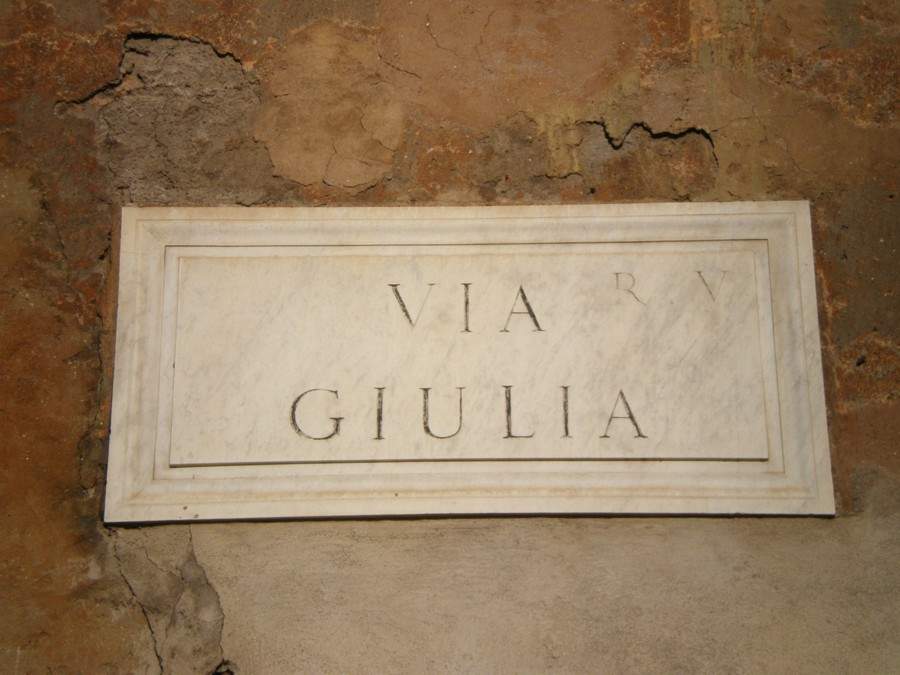


|
|
|
TOUR THIRTEEN – BERNINI - BORROMINI: RIVALRY WHICH CHANGED THE FACE OF THE ETERNAL CITY
Route:
- Piazza Barberini
- Palazzo Barberini
- the church of San Carlo alle Quattro Fontane
- the church of Sant’Andrea al Quirinale
- the church of Sant'Ivo alla Sapienza
- Piazza Navona
- the church of Sant'Agnese in Agone
- Palazzo Spada
Time of sightseeing: about 4/5 hours
A tour following the tracks of two most outstanding Italian artists of Baroque and creators of the architectural outlook of the 17th century
Rome. Their rivalry brought into being magnificent buildings with impressive
interiors, beautiful fountains and numerous sculptures.
|
|
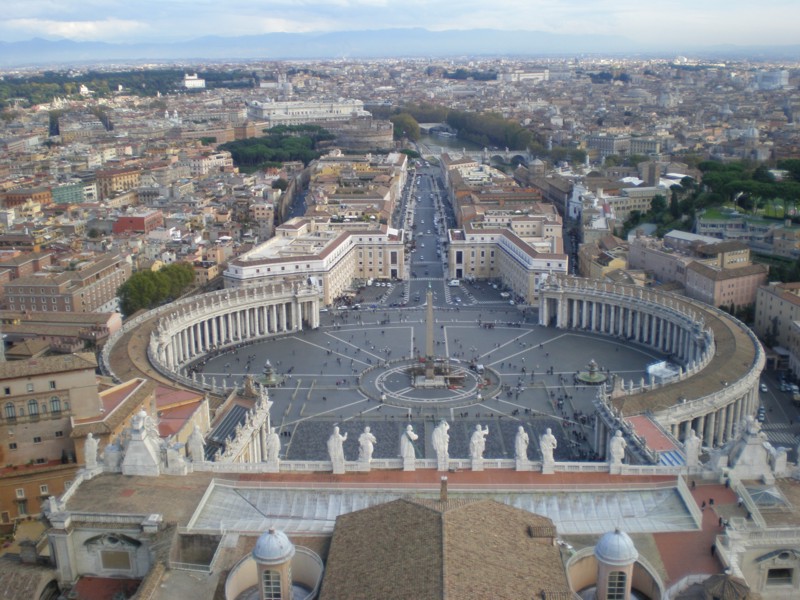



|
|
|
|
|
Photography © by Michał Werschler
|

